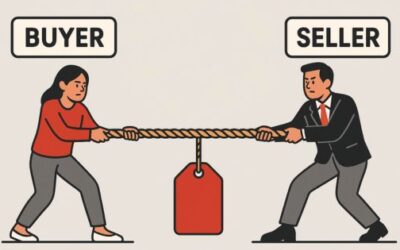The success of your business largely hinges on the success and effectiveness of your sales team. An inadequately trained sales team can lead to stagnant growth, plummeting revenue, and missed opportunities. DIY sales training is often the hidden culprit. Here are 5 signs your DIY sales training isn’t working.
1. Lack of Interaction in Training
Many DIY trainings at a corporate level rely heavily on traditional lecture-based presentations. Lectures can have their place, but they lack engagement and practice that’s needed for effective sales training. A successful sales team requires more than passive learning, they need to be actively applying what they’re learning.
Interactive exercises, role-playing, and simulations significantly enhance the learning experience. These methods not only make the training more engaging, but they provide practical experience with real-time feedback that can be applied in real-world sales situations. Studies suggest that lecture dominated trainings can result in learners retaining as little as 20% of the information after two weeks. But when learners are asked to actively apply the information from an activity-based environment, they retain 75-80%.
2. Ineffective Learning Materials
Converting years of experience and knowledge into concise, engaging learning modules and presentations is a daunting task. Inadequate training materials hamper the effectiveness of training programs and are a major drain on a sales leader’s time. This imbalance makes it difficult for the team to absorb and apply the knowledge effectively.
To overcome this, consider investing in legitimate training resources. Professional sales training and consulting companies have spent the time and money with instructional design organizations to craft materials that significantly enhance the quality of the training.
3. Lack of Behavioral Changes
One of the most significant goals of any corporate training is to induce a behavioral change in the team. If, after training, your team’s behaviors remain unchanged or revert back to the same ‘ol same ‘ol after a short period of time, it’s a clear indicator that your DIY approach is not delivering on the desired result. Effective sales training should lead to tangible changes in how your team interacts with prospects, CRM management, and your deal statistics.
Achieving this change requires incorporating ongoing coaching and feedback into your training regimen. Provide your team with opportunities to apply what they’ve learned in a supportive environment and offer constructive feedback. Bridge the gap between theory and practical application.
4. Training That Morphs in Product Focus
Sales training should be about equipping your team with the skills and strategies they need to conduct better discoveries, offer precise recommendations, and close deals more effectively. However, DIY sales trainings often shift towards the company’s product lines, features, and benefits rather than teaching a productive sales methodology. This shift fails to address the core needs of the sales team.
Keep your training focused on the fundamental principles of your chosen methodology. Product knowledge is essential, but it should be complimentary to their sales skills. Balance product knowledge with proven sales strategies.
5. Consistently Poor Results
The most glaring sign that your DIY training is falling short is when your team consistently delivers the same results before and after the training. If there is no noticeable improvements in sales performance, close rates, etc. it’s time to reassess your training approach.
Effective sales training should lead to positive change and improved results quickly.
Boost Your Sales Training Effectiveness
Teaching an effective methodology or approach is only half the battle. The other half is HOW you teach them. The team should retain the information, know how to apply their learning, and execute the knowledge effectively. Most importantly, the team must adopt new behaviors based on the information they learn.
Creating a supportive learning environment that encourages practice, feedback, and the application of knowledge in real-world scenarios is critical. Ongoing coaching and mentorship plays a significant role in reinforcing the training’s principles.
DIY sales training can be a cost-effective option, but it often falls short of producing the desired results. These 5 signs should serve as a wake-up call for sales leadership considering or currently using a DIY approach. To truly enhance your sales team’s performance, you must invest in interactive, effective training that addresses behavioral changes and results in tangible improvements. Effective sales training is not just about what’s being taught but how it’s taught and the environment in which it’s learned.





0 Comments